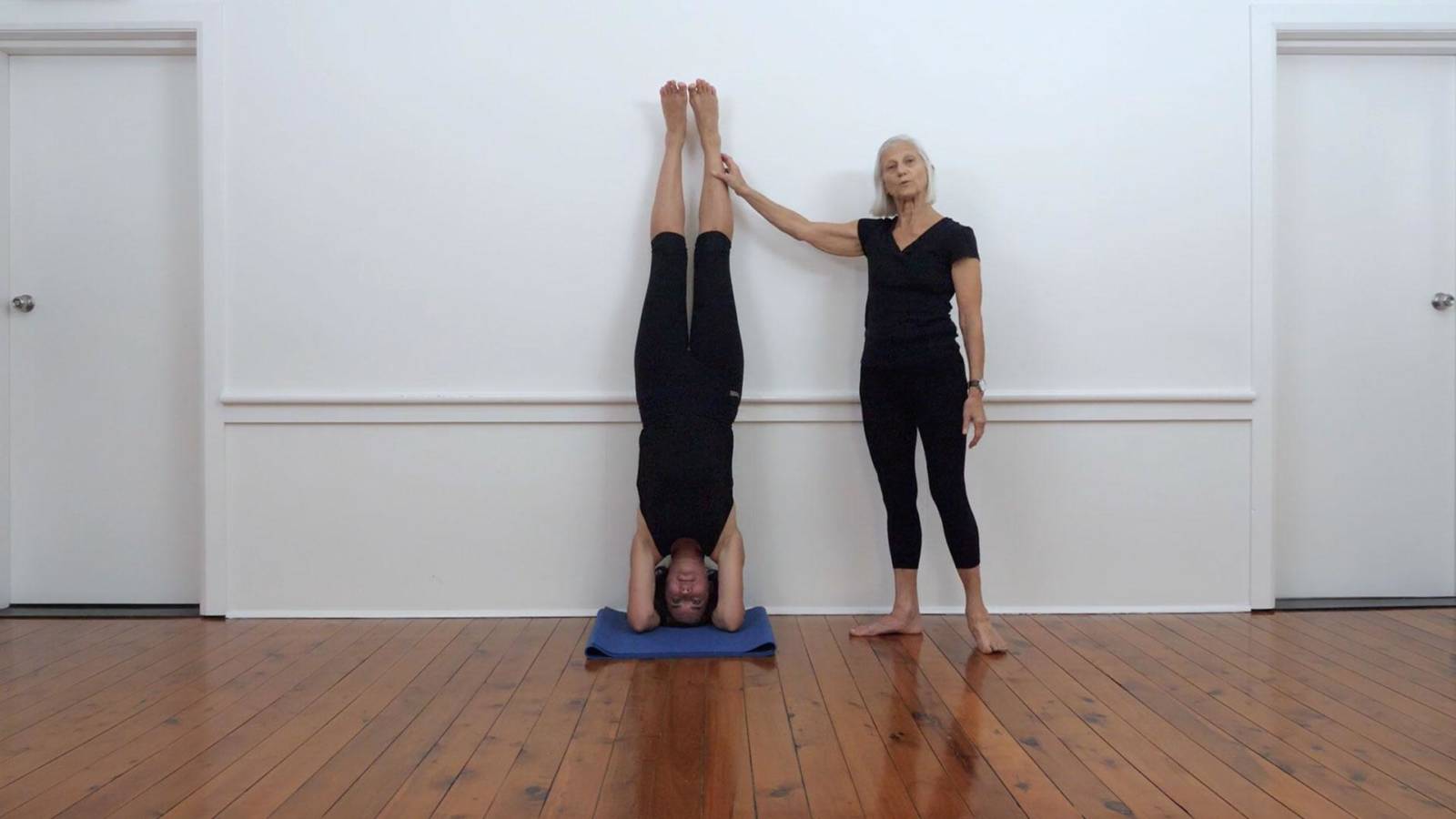Salamba Sirsasana in Iyengar yoga
Headbalance or supported headstand. This pose is often called “king of the asana.” It is an important pose in Iyengar Yoga practice. It is always paired with Shoulderstand (or a pose from the wider Sarvangasana family, such as Setu Bandha) so that the heating and invigorating effects of Headstand can be counteracted by the cooling qualities of Shoulderstand. (Shoulderstand need not be practised immediately after Headstand, but it should appear somewhere in the sequence after Headstand is taken. Practice Shoulderstand for at least as long as you held Headstand, or even 1.5 or 2 times as long.) Headstand is first learned near the wall and later practised freely balancing in the centre of the room.
How to do and when to use Salamba Sirsasana
A good foundation in the standing poses and lift strength and opening in the upper arms and shoulders are necessary before learning Headstand. Guidance from a certified teacher is prudent when learning this pose. Stability, confidence strength, and readiness in the body need to be built progressively. Poses like Adho Mukha Svanasana begin to prepare the body for Headstand. In classical sequencing, Prasarita Padottanasana is often taken immediately before Sirsasana.
Once the pose becomes established in the practitioner, it has a mentally clarifying effect. It is said to sharpen concentration and focus. The blood supply to the whole body is affected, by virtue of the inverted nature of the pose. The tissues of the brain, and important glands like the pituitary, are thought to be benefited by this posture.

